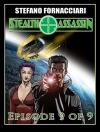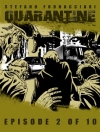Joara is a tale depicting the 1st organized attempt to bring civilization, on Spanish terms, into the interior of North America. It was an 18 month experience in cultural transformation that ended in April of 1568. The archeologists who are still uncovering the remains of Fort San Juan in the town of Joara have said, ‘its burned buildings offer a window onto a single historical event: the fiery destruction of the fort and the end of Spanish colonial ambitions in Northern La Florida.’ The 4 main characters of the story; 3 young Portuguese men and an older Spanish Gypsy arrive in America with much baggage, as told in the Intro. and in the prequel to Joara entitled Belmonte. Ruy, Davide, Daniel and Juancinto arrive in summer of 1566 at the Spanish colony of Santa Elena on the SC coast. They are part of a 250 man Expedition led by Capt. Juan Pardo, who is ordered to take half his men and find food for the colony. In addition he is to find a short-cut across the Appalachians to the silver mines in Mexico and declare all lands for King Phillip, make friends with the Indians, tax them and convert them to Catholicism. Setting out on the 1st of Dec., 1566, the expedition arrives at the Chiefdom of Joara on Christmas day. Joara is a thriving collection of Catawba villages that de Soto had written about 27 years previously. Seeing snow on the distant Blue Ridge Mts., Pardo decides not to cross them. He builds a fort named Fort San Juan and suddenly returns to Santa Elena on rumor of an anticipated French attack.Pardo leaves 30 men in Joara, including our 4 protagonists. Sgt. Hernando Moyano is left in charge of the garrison. Moyano is a treasurer seeker and takes 20 soldiers, including Juancinto and Daniel, into the mountains and massacres a tribe called Chisca, rumored to have gold. Moyano then proceeds down rivers to a large Creek town called Olamico, located on an island in the French Broad. They build a small fort and remain in Olamico for almost a year in a fearful limbo expecting attack and waiting for Pardo to rescue them. Meanwhile, Daniel courts Immokalee, the daughter of the chief of Olamico. She tells Daniel of the myth of La Gran Copala, a fabled city of gold that had obsessed de Soto. Immokalee convinces Daniel that it is only 2 weeks away down the rivers. The 3 steal 2 canoes and proceed down the Tennessee to just past Chattanooga. There that have a river accident which becomes a spiritual experience. Walking back to Olamico, they arrive at the time Capt. Pardo shows up with 125 men. They all march south for a week then turn around when warned of an ambush by thousands of warriors. On the way back, a fort is built at the Cherokee river village of Cauchi, near Asheville. Juancinto and Daniel with Immokalee are garrisoned at this fort. Pardo then proceeds to Joara, but spends little time there, leaving 40 men at the fort, again including Davide and Ruy. These two have been in Joara for over a years and have learned to speak Catawba with the help of Vara, the daughter of the medicine man, and her friend Xequina. Ruy and Xequine fall in love which is a problem because she is promised from childhood to a young war chief named Ayo. Daniel and Ayo also become rivals for Xequina’s heart and on the ‘ball field’. The rivalry reaches a climax at the Green Corn Ceremony in August of 1567. By early spring of 1568 two Spanish soldiers have successfully transformed homegrown grapes into wine. They lure Ayo’s younger sister to a drinking party and she is assaulted. Ayo exacts revenge and flees into the mountains to encounter a great war party of Creek and Cherokee. The forts at Olamico and Cauchi have already been burned and the war party is ready to descend upon Fort San Juan. Ayo is given the chance to lead the assault, but prior to the attack he manages to warn Xequina. As Fort San Juan burns they all escape and establish a new settlement at the confluence of the Catawba and Linville River.
عن المؤلف
John Bradley wanted to be a writer as a youth in Delaware, Virgina and North Carolina but the exigencies of life in the form of raising a family and a contracting business proved a grand diversion from this dream. However, extensive time in South America with the Peace Corps and residence in Portugal and Spain plus an insatiable historical curiosity has kept the embers for creativity burning. Now in semi-retirement writing takes precedence. The first novel of historical fiction, Belmont, was completed 2017. It is placed in 16th Century Portugal , Spain and South America at the time of Inquisition and develops the characters that appear in Joara. This second novel, unlike the first, proceeds on strict time-lines and localities written in accord with 1st hand accounts of the Juan Pardo Expeditions, but offers, and even begs, for dramatization by way of creative imagination. Further books are anticipated building off the developments in Joara.












